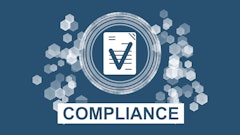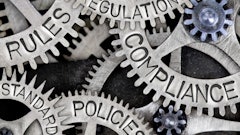
Supplier data management is costing organizations millions of dollars each year. According to AMR Research/Gartner, supplier management organizations increased their employee headcount and system resources by 35 percent, and are spending up to $1,000 per supplier annually to manage their supplier information across the enterprise.
Why is clean, consistent and connected supplier information important for effective supplier management?
In larger organizations, supplier information is typically fragmented across departmental, line of business and/or regional applications. In most cases, this means it’s inaccurate, inconsistent, incomplete and disconnected across the different siloed systems. Adding, changing or correcting information in one system doesn’t automatically update it in other systems. As a result, supply chain, sourcing and buying teams struggle to get access to a single view of the supplier so they can understand the total supplier relationship across the business. As a result, it’s difficult to achieve their goals, such as:
- Quickly and accurately assessing supplier risk management and compliance.
- Accelerating supplier onboarding to get products to market quickly.
- Improving supplier collaboration or supplier relationship management.
- Quickly and accurately evaluating supplier spend management.
- Monitoring supplier performance management.
To effectively manage global supply chain, sourcing and procurement activities, organizations must be able to quickly and easily answer questions about their suppliers’ or vendors’ companies, contacts, raw materials or products, and performance.
Quite often, organizations have separate procurement teams in different regions and they have their own regional applications. As a result, the same supplier may exist several times in the company’s supplier management system, but captured with different company names. The buying teams don’t have a single trusted view of their global supplier information. So, the different teams would purchase one product from the same supplier—each of them with different pricing and payment terms—without even knowing about it. They don’t have a clear understanding of the total relationship with that vendor and cannot benefit from negotiated corporate discounts.
If the data that’s fueling operational and analytical systems isn’t clean, consistent and connected, they cannot quickly and easily access the information they need to answer these questions, and manage their supply chain, sourcing or procurement operations efficiently or effectively. And this results in ineffectiveness, missed procurement opportunities and high administration costs.
For example, a fashion retailer needs to ensure that all compliance documents of its global vendors are current and complete. If the documents are incomplete or expired, the retailer could face serious problems and may risk penalties, safety issues and costs related to its supplier incompliance.
A business value assessment, recently conducted by Informatica among companies across all major industries, business models and sizes, revealed that, by leveraging trusted data quality, annual supplier spend could be reduced by an average of $6 million. Breaking this down by industry, the possible annual reduction in supplier spending, thanks to improved supplier information and data quality, could be $9.02 million for consumer packaged goods (CPG), $4.2 million for retail and $2.76 million for industrial manufacturing companies.
To reduce costs related to poor supplier information quality, these are the five best practices that can help your company achieve a more effective supplier relationship management:
- Make it strategic . Get senior management buy-in and stakeholder support. Make the business case, and get the time, money and resources you need.
- Leave your data where it is. Effective supplier relationship management lets you leave your data where it naturally lives: in the apps and data stores your business users depend on. You just need to identify these places, so you can access the data, and share clean, consistent and connected supplier data back.
- Apply data quality at the application level. It’s far better to clean your data at the source, before trying to combine it with other data. Apply standards and practices at the application level to ensure you’re working with the most accurate and complete data, and your mastering job will be much, much easier and deliver far better results.
- Use specialized master data management and data integration platforms. It takes specialized technology that’s optimized for collecting, reconciling, managing and linking diverse data sets (as well as resolving duplicates and managing hierarchies) to achieve total supplier information management. Your program is going to have to relate to the supplier domain, as well as to other, equally important data types. Attempting this with homemade integration tools or point-to-point integrations is a major mistake. This wheel was already invented.
- Share clean data with key supplier apps on an ongoing basis. It’s no good having clean, consistent and connected supplier data if you can’t deploy it to the point of use: to the applications and analytics teams and tools that can turn it into insight (and money)—including your enterprise data warehouse where spend analytics happen.
These best practices may seem basic or obvious, but failing to apply them is the main reason global supplier data programs stumble. They can help fuel operational and analytical applications with clean, consistent and connected supplier information for a more accurate view of suppliers’ performance, compliance and risk. As a result, supply chain, sourcing and buying teams will be empowered to cut costs by negotiating more favorable pricing and payment terms, and streamlining their processes.
Antonia Renner is the senior manager of information quality solutions marketing at Informatica.


























